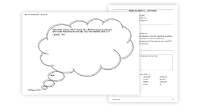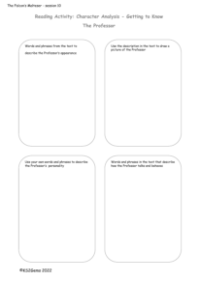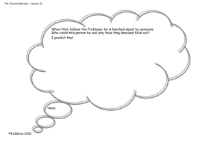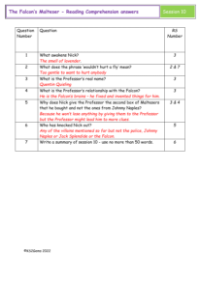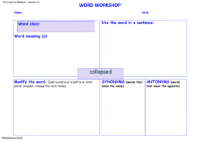The Falcon's Malteser - Session 10 - Chapter 12 - Worksheet
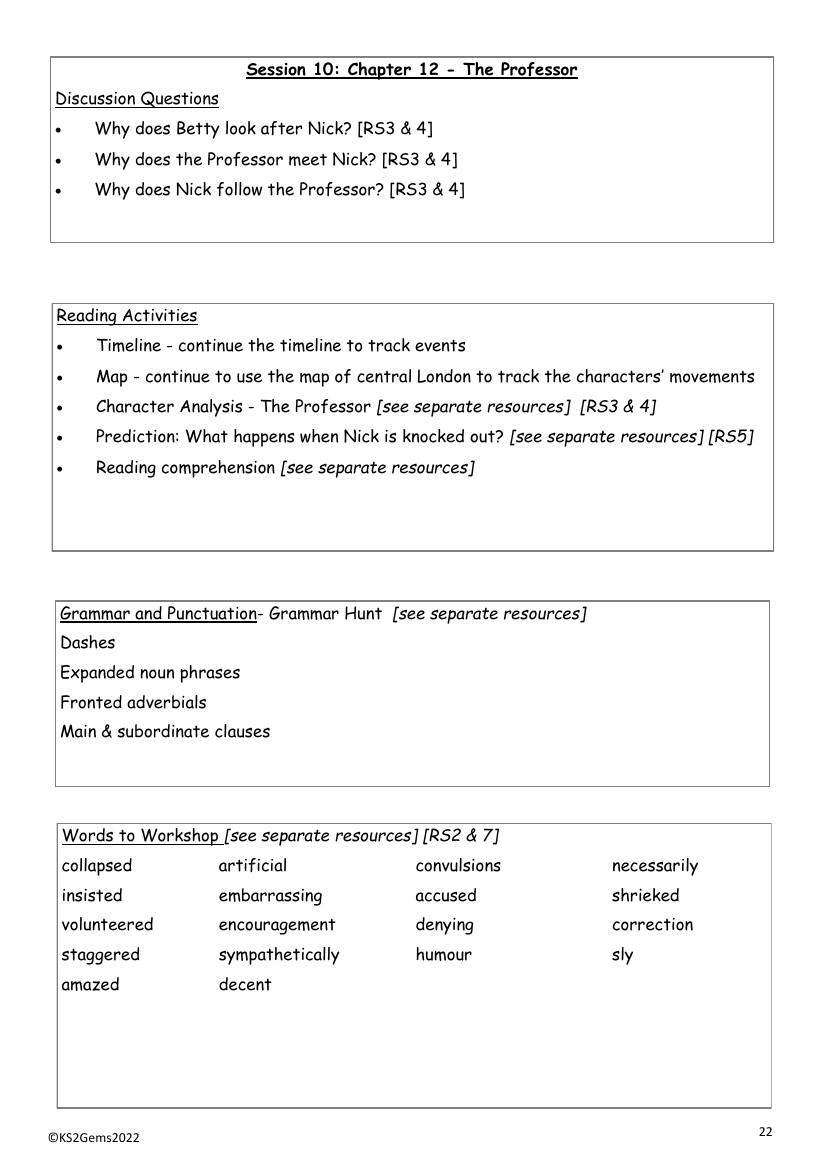
English Resource Description
During Session 10, Chapter 12 of "The Falcon's Malteser," students delve into the intricacies of the narrative through a series of discussion questions that probe the motivations behind the characters' actions. They explore why Betty cares for Nick, the reasons for the Professor's meeting with Nick, and what prompts Nick to tail the Professor. These questions are designed to deepen students' understanding of the characters and plot, while also honing their reading and comprehension skills.
The session is enriched with a variety of reading activities that encourage students to engage with the text in an interactive manner. They continue to add to a timeline that tracks the story's events and use a map of central London to follow the characters' movements, enhancing their geographical skills. A character analysis of the Professor is conducted, and students make predictions about the story's progression, particularly speculating on the outcome of Nick being knocked out. Comprehension exercises, grammar hunts focusing on dashes, expanded noun phrases, fronted adverbials, and clause structures, as well as vocabulary workshops, further reinforce their language skills.
In addition to reading and grammar, the session offers numerous writing opportunities. Students can contribute to an Evidence Board, write diary entries from Betty or the Professor's perspective, or craft a persuasive letter from the Professor to Nick regarding the Maltesers. These activities aim to foster creative expression and critical thinking.
The lesson also incorporates a wealth of cross-curricular links, connecting the literary study with other subjects such as science, computing, history, geography, art, design technology, music, physical education, religious education, and personal, social, health and economic (PSHE) education. These links provide a holistic learning experience, allowing students to explore concepts like light, forces, electricity, and materials in science; crime and punishment in history; and the use of maps in geography. Creative projects include designing a game, creating an advertisement, painting a portrait, and engineering an intruder alarm. In music, students analyse how soundtracks enhance the atmosphere in detective and crime genres, while in PE, they focus on developing strength and agility. Discussions on crime in the context of religion, the rule of law, and first aid are also integrated into the curriculum, ensuring a comprehensive educational journey that spans multiple disciplines.
